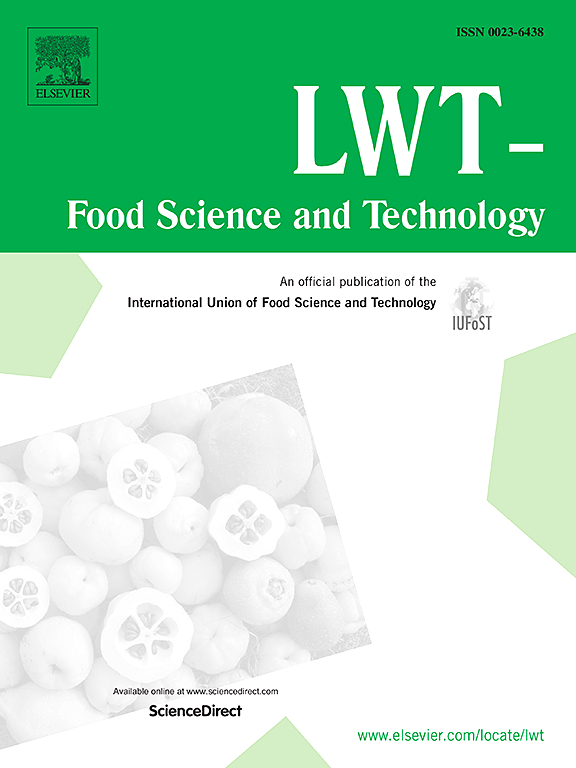Mechanistic and multi-parametric insights into preserving nutritional, bioactive, and flavor attributes of daylily (Hemerocallis citrina): A comparative evaluation of freeze-drying, hot-air drying, and sun drying
IF 6
1区 农林科学
Q1 FOOD SCIENCE & TECHNOLOGY
引用次数: 0
Abstract
This study offers a comparative evaluation of freeze-drying (FD), hot-air drying (HD), and traditional sun drying (SD) on the physicochemical properties of Hemerocallis citrina Baroni cultivars, aiming to address a critical gap in postharvest processing optimization. By systematically assessing multiple quality parameters—nutritional composition, bioactive compound retention, antioxidant capacity, and flavor profiles—this work highlights the distinct benefits of each drying technique. FD preserved thermolabile compounds most effectively across both cultivars, maintaining significantly higher levels of essential nutrients (total sugars, soluble proteins, ascorbic acid) and bioactive compounds. In MLHH, FD retained superior levels of polyphenols (5.58 mg/g), flavonoids (1.72 mg/g), and carotenoids (54.70 μg/g) compared to HD (4.80, 1.28, 11.62 mg/g) and SD (3.10, 0.49, 7.45 mg/g). XHH showed even higher retention under FD for these compounds, with polyphenols reaching 7.15 mg/g and flavonoids at 2.37 mg/g. These enhanced bioactive contents corresponded to superior antioxidant activity, particularly in XHH where FD achieved 84.60% ABTS radical scavenging compared to HD (43.18%) and SD (76.44%). While SD demonstrated superior flavor development, yielding the highest volatile compound content in XHH (69.01 mg/kg vs. FD: 16.02, HD: 15.84 mg/kg), HD showed selective advantages in mineral retention, particularly for calcium in MLHH (HD: 4025 mg/g, FD: 3537 mg/g, SD: 3225 mg/g). This comprehensive analysis thus establishes evidence-based guidelines for tailoring drying protocols according to specific quality requirements, facilitating targeted approaches in functional food development and nutraceutical manufacturing.
求助全文
约1分钟内获得全文
求助全文
来源期刊

LWT - Food Science and Technology
工程技术-食品科技
CiteScore
11.80
自引率
6.70%
发文量
1724
审稿时长
65 days
期刊介绍:
LWT - Food Science and Technology is an international journal that publishes innovative papers in the fields of food chemistry, biochemistry, microbiology, technology and nutrition. The work described should be innovative either in the approach or in the methods used. The significance of the results either for the science community or for the food industry must also be specified. Contributions written in English are welcomed in the form of review articles, short reviews, research papers, and research notes. Papers featuring animal trials and cell cultures are outside the scope of the journal and will not be considered for publication.
 求助内容:
求助内容: 应助结果提醒方式:
应助结果提醒方式:


